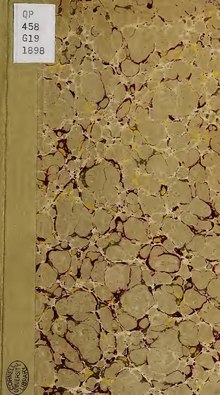Eleanor Gamble
Gamble published most of her work on audition and memory influenced by Georg Elias Müller, Edward B. Titchener, Mary Whiton Calkins, and Ernst Heinrich Weber.
[1] Despite her chronic eye conditions she was successful in editing volumes of textbooks, her own papers, and directing many master's degree students.
She held several teaching positions over the course of her career and was a member of several influential organizations including the American Psychological Association (APA).
Gamble was a distinguished and well-liked professor at Wellesley College for more than two decades, and by 1930 she was the head of the Department of Philosophy and Psychology following the death of Mary Whiton Calkins.
In her time as an associate professor, Gamble received a postdoctoral research grant to study with Müller in Germany in 1906.
[2] After returning from Germany, Gamble became the director of the psychological laboratory at Wellesley, previously run by Mary Whiton Calkins.
[1] Wellesley College has a series of stained glass windows in their chapel, including one dedicated to Eleanor Gamble on 17 June 1939.
